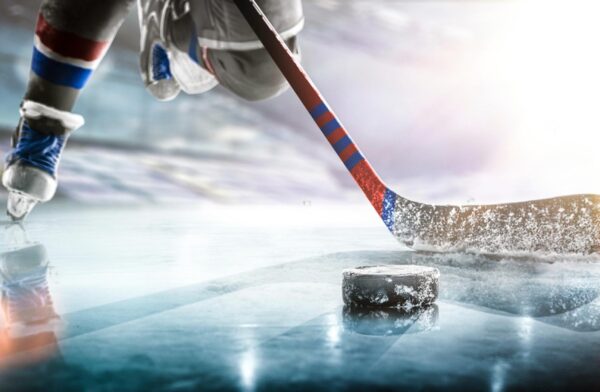As the ultimate game of speed, skill, and strategy, hockey is a sport that captivates fans around the world. There’s nothing quite like the adrenaline rush of a fast-paced game, with players carving up the ice as they skate aggressively from one end of the rink to the other. From the clanging of sticks to the roar of the crowd, the excitement is palpable and the action is relentless!
With all the jargon and terminology used in hockey, it can be tough for newcomers to keep up with the game’s play-by-play announcers. That’s why Bovada Sportsbook has put together a comprehensive hockey glossary, complete with all the key terms and definitions you need to know. Even if you’re new to hockey, this glossary will help you understand the ins and outs of the fastest game on earth.
The time has come to lace up your skates and grab your stick, because we’re about to take you on a journey through the world of hockey. From power plays to face-offs and everything in between, we’ll cover all of the key terminology you need to know to become a true hockey aficionado. So let’s drop the puck and get started!
Latest hockey odds at Bovada!
Hockey Terms Explained
Assist – A pass made by a player that sets up a goal scored by a teammate. In hockey, there is both the primary and secondary assist. A primary assist is awarded to the player who made the last pass that directly led to the goal being scored, while a secondary assist is awarded to the player who made the pass that led to the primary assist.
Backcheck – A defensive tactic in hockey where a forward skates back towards their own end of the ice to help defend and prevent the opposing team from scoring.
Boarding – A penalty in hockey called when a player hits their opponent from behind, with excessive force, into the boards in a dangerous manner. The penalty for boarding is usually two or five minutes, depending on the severity of the infraction.
Breakaway – As one of the most exciting plays in hockey, a breakaway is when a player has possession of the puck and is skating freely towards the opposing team’s net, with no defenders between them and the goalie.
Checking – This is a physical defensive play where a player uses their body to disrupt the progress of an opposing player who has possession of the puck.
Crease – A semi-circular area that extends six feet out from the goal line and is marked with a blue paint. The crease has a specific purpose in hockey, as it is designed to protect the goaltender and prevent opposing players from interfering with them.
Dump and Chase – A strategy used by teams to gain possession of the puck in the offensive zone. In a dump and chase play, a player will shoot or “dump” the puck into the opposing team’s zone, often along the boards or into a corner. The player or their teammates will then “chase” after the puck and try to retrieve it, either by beating the opposing players to the puck or by using their body to gain position and control.
Faceoff – A method used to start or resume play. During a faceoff, two opposing players stand facing each other with their sticks on the ice. The linesmen drops the puck between the two players and they battle to win possession.
Forecheck – A defensive strategy where players move aggressively into the offensive zone to put pressure on the opposing team and prevent them from exiting their own zone with the puck.
Hat Trick – When a player scores three goals in a single game. This is often celebrated by fans throwing hats onto the ice surface. A natural hat trick is when a player scores three consecutive goals without any other players on either team scoring in between.
Icing – A violation that occurs when a player shoots the puck from their team’s half of the ice past the opposing team’s goal line and the puck is not touched by any players before crossing the goal line. When icing is called, play is stopped and a faceoff is held in the offending team’s zone.
One-Timer – A type of shot where a player shoots the puck directly after receiving a pass, without first settling or controlling the puck.
Penalty Box – This is the area where hockey players serve their penalties for infractions committed on the ice.
Power Play – In hockey, a power play occurs when a team has more players on the ice than their opponents due to a penalty being assessed on the opposing team, which gives them a significant advantage.
Shutout – A term used to describe a game in which one team’s goaltender prevents the opposing team from scoring any goals.
Slap Shot – A type of shot where a player winds up and strikes the puck with their stick using a powerful swinging motion. To execute a slap shot, players use their entire body to generate as much power as possible as they swing forward and strike the puck.
Slashing – A penalty that occurs when a player swings their stick in a violent or reckless manner and strikes an opposing player. The penalty for slashing is usually two or five minutes, depending on the severity of the infraction.
Top Shelf – The term “top shelf” is used to describe a shot that is aimed at the top part of the net, usually in the area just under the crossbar.
Wrist Shot – A type of shot where a player shoots the puck by quickly snapping their wrist while keeping the blade of their stick in contact with the puck. This is a more controlled and precise technique that allows players to shoot the puck with speed and accuracy.
Sign up to Bovada today!
Zamboni – A machine used to resurface the ice between periods and after games. The Zamboni uses a series of blades and scrapers to shave off the top layer of the ice, while also distributing a layer of hot water to smooth out any rough spots or divots.

